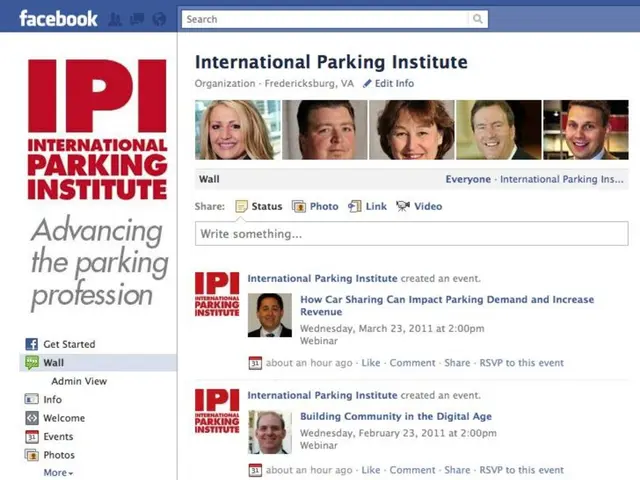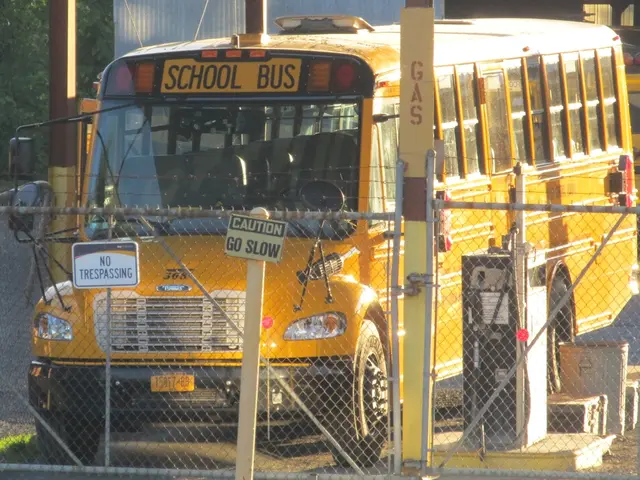Strengthening Grip on Autonomous Nuclear Safety Regulatory Body: Trump's Action
The Trump administration has decided to tighten its grip on the independent Nuclear Regulatory Commission (NRC), an agency responsible for overseeing America's nuclear reactors. Two U.S. officials, fearing retribution, anonymously told NPR about the looming changes. New rules regarding reactor safety will now pass through the White House for review and possible editing, a significant departure from the historical independence the NRC has enjoyed.
The NRC's new procedures for White House review have been in the works for months but were recently finalized. A draft executive order proposes to reform the NRC, calling for a workforce reduction, a "wholesale revision" of regulations, and shortening the time for reactor design reviews with the potential for loosened radiation exposure standards.
Critics of the proposed changes argue that they will compromise safety, stating that independence from political and industry influence is crucial for avoiding accidents. An executive order, although marked pre-decisional and deliberative, is now in sight, part of a series of draft orders that appear to promote the nuclear industry. Other draft orders include provisions for constructing small modular nuclear reactors at military bases and the development of advanced nuclear fuels.
As concerns over the changes in the NRC arise, it is unclear which, if any, of these executive orders will be signed by President Trump. In a statement, the NRC claimed they were collaborating with the White House to improve regulatory processes. The White House, on the other hand, characterized the moves as an exercise of the president's constitutional power and nothing out of the ordinary.
Historical Context:
Established in 1974, the NRC's primary goal has been to stringently regulate nuclear reactors and protect the public from radiation exposure. Following a partial nuclear meltdown at Three Mile Island in 1979, the NRC stepped up enforcement.
The NRC is led by five commissioners, each appointed by the president for five-year terms and confirmed by the Senate. The commission balances Democrat and Republican appointees, formulating policies, developing nuclear reactor and materials regulations, issuing orders to licensees, and resolving legal matters.
In the past, the NRC has faced criticism for being too conservative, but recent reform efforts have included a bipartisan law designed to accelerate new reactor design development.
The New Order:
The increased White House oversight of the NRC began with an executive order signed in February. This order mandated independent agencies to report directly to the White House Office of Management and Budget.
The extra White House review has the potential to slow down the licensing approval process as the commission already struggles to create rules efficiently, according to experts. Additionally, political appointees meddling in technical decisions could lead to confusion and chaos, a concern voiced by Edwin Lyman, a nuclear physicist at the Union of Concerned Scientists.
The draft executive order also promises a radical overhaul of the agency, with plans to repeal the Linear No Threshold (LNT) standard for radiation safety. The LNT model assumes that any level of radiation exposure carries some risk, while the new standard could set a minimal safe threshold. Critics caution that undermining established scientific consensus on radiation exposure could lead to political pressure to increase the acceptable exposure limits.
Other proposed changes include staff reductions and a comprehensive revision of regulations, working in coordination with the Department of Government Efficiency and the Office of Information and Regulatory Affairs. These reforms aim to streamline processes and possibly relax regulatory requirements, causing worry that scrapping existing rules could disrupt operations and weaken safety outcomes.
Overall, experts remain skeptical of these changes, as they could potentially compromise safety oversight and the scientific integrity of radiation exposure standards, despite framing them as efforts to expedite licensing and foster advanced nuclear technologies.
[References]1. Axios (2020). Exclusive: Trump's next nuclear power moves. Retrieved from https://www.axios.com/trump-nuclear-power-moves-executive-orders-5f699a33-f49e-445d-87a4-67f74faa88f1.html2. Neutronics (2020). Trump Moves to Tighten Oversight of Nuclear Regulatory Commission. Retrieved from https://neutronics.report/2020/02/19/trump-moves-to-tighten-oversight-of-nuclear-regulatory-commission/3. UCS (2020). Trump Administration'sProposed Executive Order on the Nuclear Regulatory Commission Would Weaken NRC's Safety Mission. Retrieved from https://www.ucsusa.org/resources/trump-administrations-proposed-executive-order-nuclear-regulatory-commission-would-weaken-4. Breakthrough Institute (2020). Trump Moves to Restructure the Nuclear Regulatory Commission. Retrieved from https://thebreakthrough.org/2020/02/20/trump-moves-to-restructure-the-nuclear-regulatory-commission/5. Scientific American(2020). Trump Pushes to Roll Back Radiation Safety Rules: That's Dangerous. Retrieved from https://www.scientificamerican.com/article/trump-pushes-to-roll-back-radiation-safety-rules-thats-dangerous/
- The government has decided to intervene in the operations of the Nuclear Regulatory Commission (NRC), an independent watchdog agency that oversees America's nuclear reactors.
- The Trump administration aims to implement new rules concerning reactor safety, which will undergo White House review and possible editing.
- These changes mark a departure from the historical independence the NRC has enjoyed in its mission to protect public safety.
- The NRC's new procedures for White House review have been in the works for months and were recently finalized.
- A draft executive order proposes reforming the NRC, including workforce reductions, a revision of regulations, and shortened review times for reactor designs.
- Critics argue that these changes could compromise safety, as independence from political and industry influence is crucial for avoiding accidents.
- The NRC claims it is collaborating with the White House to improve regulatory processes.
- The White House, in response, characterizes these moves as an exercise of the president's constitutional power.
- Established in 1974, the NRC's primary goal has been to regulate nuclear reactors and protect the public from radiation exposure.
- After the partial nuclear meltdown at Three Mile Island in 1979, the NRC stepped up enforcement.
- The NRC is led by five commissioners, each appointed by the president and confirmed by the Senate.
- The commission balances Democrat and Republican appointees, formulating policies, developing regulations, and resolving legal matters.
- In the past, the NRC has faced criticism for being too conservative, but recent reform efforts have attempted to accelerate new reactor design development.
- An executive order signed in February mandated independent agencies to report directly to the White House Office of Management and Budget.
- This order marked the beginning of increased White House oversight of the NRC, potentially slowing down the licensing approval process.
- Experts warn that political appointees meddling in technical decisions could lead to confusion and chaos.
- The draft executive order also promises a radical overhaul of the agency, including plans to repeal the Linear No Threshold (LNT) standard for radiation safety.
- Critics caution that undermining established scientific consensus on radiation exposure could lead to political pressure to increase the acceptable exposure limits.
- Other proposed changes include staff reductions and a comprehensive revision of regulations, working in coordination with the Department of Government Efficiency and the Office of Information and Regulatory Affairs.
- These reforms aim to streamline processes and possibly relax regulatory requirements, causing worry that scrapping existing rules could disrupt operations and weaken safety outcomes.
- Experts remain skeptical of these changes, as they could potentially compromise safety oversight and the scientific integrity of radiation exposure standards.
- As concerns over the new NRC orders arise, it is unclear which, if any, of these executive orders will be signed by President Trump.
- A bipartisan law designed to accelerate new reactor design development was previously introduced.
- Homeland security and public safety agencies will be affected by the planned restructuring of the NRC.
- Other government agencies, such as renewable-energy, manufacturing, finance, oil-and-gas, and housing-market interest groups, will observe the changes closely.
- Public transit, entrepreneurship, and small-business advocates may also take an interest in the NRC changes, as they could influence energy policies and industry growth.
- Interior-design, cooking, and transportation sectors may be indirectly affected by any adjustments to energy regulations and public safety measures.
- Leadership and diversity-and-inclusion experts will monitor the NRC's processes, as changes to a prominent government agency could shape organizational culture and representation.
- Cybersecurity, lifestyle, outdoor-living, fashion-and-beauty, food-and-drink, automotive, and venture-capital firms will similarly track the NRC developments, as it could impact consumer trends, innovation, and investment.
- Personal-finance, wealth-management, home-and-garden, home-improvement, baking, and real-estate professionals may observe the changes for potential impacts on their clients, resources, and financial markets.
- In the sphere of policy-and-legislation, political analysts, journalists, and the general public will follow the progress of the proposed changes to the NRC, with implications for car-accidents, fires, and other safety issues, as well as broader impacts on the stock-market, private-equity, and debt-management.





